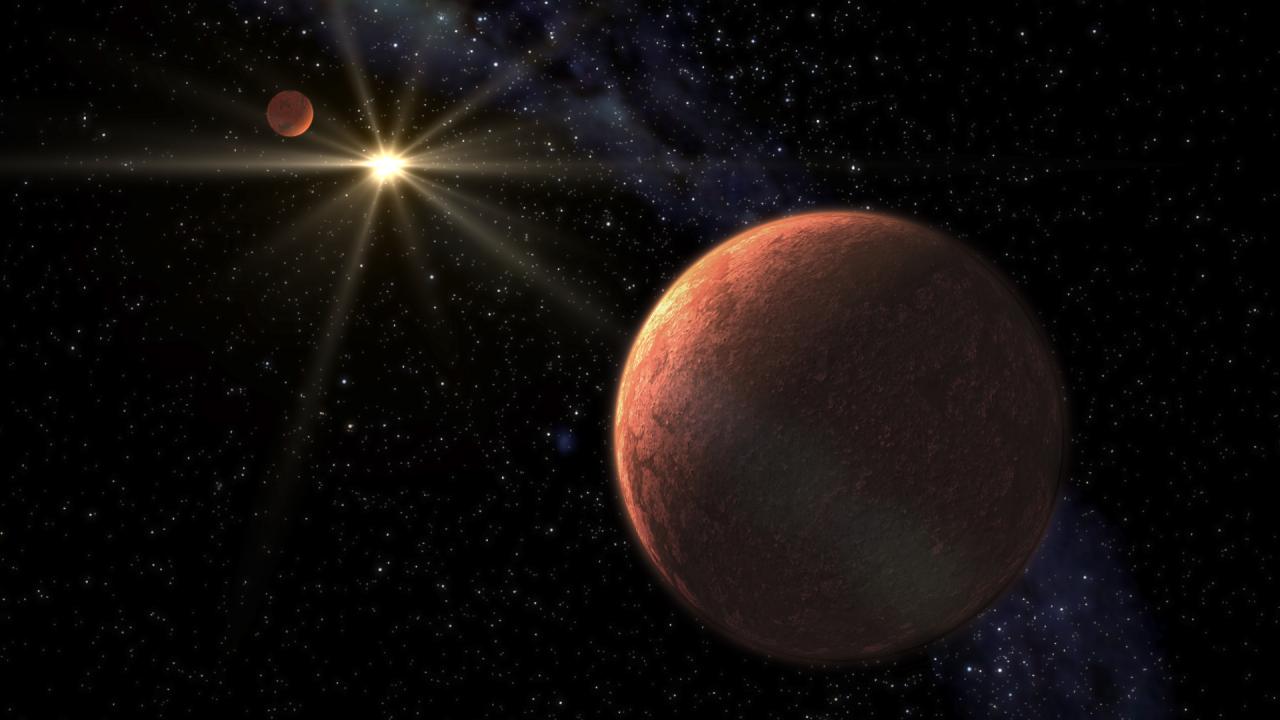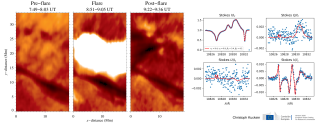General
Our goal is to study the processes that lead to the formation of low mass stars, brown dwarfs and planets and to characterize the physical properties of these objects in various evolutionary stages. Low mass stars and brown dwarfs are likely the most numerous type of objects in our Galaxy but due to their low intrinsic luminosity they are not so well known. We aim to study the frequency, multiplicity and spatial distribution of these objects in the solar neighbourhood and in nearby star forming regions and stellar clusters in order to better understand the mechanism of formation, characterise their optical and infrared properties and establish the relation between spectral properties, mass and luminosity.. Most of our effort will be dedicated to push toward lower mass limits the detection of these astros either bounded to stars and brown dwarfs and/or free-floating in interstellar space. The lowest mass objects display a lower intrinsic luminosity and cooler effective temperatures thus they are remarkably difficult to detect using direct imaging techniques. However, these techniques allow a full photometric and spectroscopic characterization and a best determination of their physical and chemical properties. We also aim to investigate the presence of planets around low mass stars using radial velocity measurements and techniques for high spatial resolution imaging. We will develop ultrastable spectrographs for large telescopes and systems for ultrafast imaging. With the spectrographs it would be possible to detect planets of similar mass to the Earth around G, K and M-type stars. The goal is to establish the frequency of these planets in stars of the solar neighbourhood and characterise the properties of the associated planetary systems.
Members
Results
- The optical and near-infrared sequence of 10 Myr-old L dwarfs in the nearest OB association to the Sun, Upper Scorpius
- The lithium depletion boundary of the Hyades cluster.
Scientific activity
Related publications
-
Primeval very low-mass stars and brown dwarfs - I. Six new L subdwarfs, classification and atmospheric properties
We have conducted a search for L subdwarf candidates within the photometric catalogues of the UKIRT Infrared Deep Sky Survey and Sloan Digital Sky Survey. Six of our candidates are confirmed as L subdwarfs spectroscopically at optical and/or near-infrared wavelengths. We also present new optical spectra of three previously known L subdwarfs (WISEA
Zhang, Z. H. et al.Advertised on:
12017 -
First gravitational-wave burst GW150914: MASTER optical follow-up observations
The Advanced LIGO observatory recently reported the first direct detection of the gravitational waves (GWs) predicted by Einstein & Sitzungsber. We report on the first optical observations of the GW source GW150914 error region with the Global MASTER Robotic Net. Between the optical telescopes of electromagnetic support, the covered area is
Lipunov, V. M. et al.Advertised on:
32017 -
The EChO science case
The discovery of almost two thousand exoplanets has revealed an unexpectedly diverse planet population. We see gas giants in few-day orbits, whole multi-planet systems within the orbit of Mercury, and new populations of planets with masses between that of the Earth and Neptune—all unknown in the Solar System. Observations to date have shown that
Tinetti, Giovanna et al.Advertised on:
122015 -
An eclipsing double-line spectroscopic binary at the stellar/substellar boundary in the Upper Scorpius OB association
Aims: We aim at constraining evolutionary models at low mass and young ages by identifying interesting transiting system members of the nearest OB association to the Sun, Upper Scorpius (USco), which has been targeted by the Kepler mission. Methods: We produced light curves for M-dwarf members of the USco region that has been surveyed during the
Lodieu, N. et al.Advertised on:
122015 -
HD 144548: A young triply eclipsing system in the Upper Scorpius OB association
The star HD 144548 (=HIP 78977; TYP 6212-1273-1) has been known as a detached eclipsing binary and a bona-fide member of the Upper Scorpius OB association. Continuous photometry from the K2 mission on Campaign Two has revealed the presence of additional eclipses due to the presence of a third star in the system. These are explained by a system
Alonso, R. et al.Advertised on:
122015 -
Probing M subdwarf metallicity with an esdK5+esdM5.5 binary
Context. We present a spectral analysis of the binary G 224-58 AB, which consists of the coolest M extreme subdwarf (esdM5.5) and a brighter primary (esdK5). This binary may serve as a benchmark for metallicity measurement calibrations and as a test bed for atmospheric and evolutionary models for esdM objects. Aims: We perform the analysis of
Pavlenko, Ya. V. et al.Advertised on:
102015 -
VLT X-Shooter spectroscopy of the nearest brown dwarf binary
Aims: The aim of the project is to characterise the two components of the brown dwarf system nearest to the Sun, WISE J104915.57-531906.1 (also called Luhman 16AB) at optical and near-infrared wavelengths. Methods: We obtained high signal-to-noise intermediate-resolution (R ~ 6000-11 000) optical (600-1000 nm) and near-infrared (1000-2480 nm)
Lodieu, N. et al.Advertised on:
92015 -
Constraints on the substellar companions in wide orbits around the Barnard's Star from CanariCam mid-infrared imaging
We have performed mid-infrared imaging of Barnard's Star, one of the nearest stars to the Sun, using CanariCam on the 10.4 m Gran Telescopio Canarias. We aim to investigate an area within 1-10 arcsec separations, which for the 1.83 pc distance of the star translates to projected orbital separations of 1.8-18 au (P > 12 yr), which have not been
Gauza, B. et al.Advertised on:
92015 -
Optical spectroscopy of candidate Alpha Persei white dwarfs
As part of an investigation into the high-mass end of the initial mass-final mass relation we performed a search for new white dwarf members of the nearby (172.4 pc), young (80-90 Myr) α Persei open star cluster. The photometric and astrometric search using the United Kingdom InfraRed Telescope (UKIRT) Infrared Deep Sky Survey and SuperCOSMOS sky
Casewell, S. L. et al.Advertised on:
82015 -
A search for lithium in metal-poor L dwarfs
Aims: The aim of the project is to search for lithium in absorption at 6707.8 Å to constrain the nature and mass of the brightest low-metallicity L-type dwarfs (referred to as L subdwarfs) identified in large-scale surveys. Methods: We obtained low- to intermediate-resolution (R ~ 2500-9000) optical (~560-770 nm) spectra of two mid-L subdwarfs
Lodieu, N. et al.Advertised on:
72015 -
Discovery of a Young Planetary Mass Companion to the Nearby M Dwarf VHS J125601.92-125723.9
In a search for common proper motion companions using the VISTA Hemisphere Survey (VHS) and the 2MASS catalogs we have identified a very red (J-{{K}s}=2.47 mag) late-L dwarf companion of a previously unrecognized M dwarf VHS J125601.92-125723.9 (hereafter VHS 1256-1257), located at a projected angular separation of 8.″ 06 ± 0.″ 03. In this work we
Gauza, B. et al.Advertised on:
52015 -
49 new T dwarfs identified using methane imaging
We present the discovery of 49 new photometrically classified T dwarfs from the combination of large infrared and optical surveys combined with follow-up Telescopio Nazionale Galileo photometry. We used multiband infrared and optical photometry from the United Kingdom Infrared Telescope and Sloan Digital Sky Surveys to identify possible brown dwarf
Cardoso, C. V. et al.Advertised on:
72015 -
A large spectroscopic sample of L and T dwarfs from UKIDSS LAS: peculiar objects, binaries, and space density
We present the spectroscopic analysis of a large sample of late-M, L, and T dwarfs from the United Kingdom Deep Infrared Sky Survey. Using the YJHK photometry from the Large Area Survey and the red-optical photometry from the Sloan Digital Sky Survey we selected a sample of 262 brown dwarf candidates and we have followed-up 196 of them using the
Marocco, F. et al.Advertised on:
62015 -
Characterization of the known T-type dwarfs towards the σ Orionis cluster
Aims: The detailed study of T-type candidate members of the young σ Orionis cluster (~3 Myr, ~352 pc, solar metallicity) is fundamental to properly assess the objects' cluster membership and their contribution to the definition of the substellar mass function. Methods: A total of three T-type candidates (S Ori 70, S Ori 73, and S Ori J053804.65
Peña Ramírez, K. et al.Advertised on:
22015 -
Very low-luminosity Class I/flat outflow sources in σ Orionis
We present an optical to submillimetre multiwavelength study of two very low-luminosity Class I/flat systems, Mayrit 1701117 and Mayrit 1082188, in the σ Orionis cluster. We performed moderate-resolution (R ˜ 1000) optical (˜0.4-0.9 μm) spectroscopy with the Cassegrain Twin Spectrograph (TWIN) spectrograph at the Calar Alto 3.5-m telescope. The
Riaz, B. et al.Advertised on:
12015 -
Spectroscopic follow-up of L- and T-type proper-motion member candidates in the Pleiades
We report on the near-infrared (JHK-bands) low-resolution spectroscopy and red optical (Z-band) photometry of seven proper-motion, very low-mass substellar member candidates of the Pleiades cluster with magnitudes in the interval J = 17.5-20.8 and K = 16.1-18.5 mag. Spectra were acquired for six objects with the LIRIS and NIRSPEC instruments
Zapatero Osorio, M. R. et al.Advertised on:
122014 -
Spectroscopy of Hyades L dwarf candidates★
We present the results of photometric, astrometric, and spectroscopic follow-up of L dwarf candidates identified in the Hyades cluster by Hogan et al. We obtained low-resolution optical spectroscopy with the Optical System for Imaging and low-intermediate Resolution Integrated Spectroscopy spectrograph on the Gran Telescopio de Canarias for all 12
Lodieu, N. et al.Advertised on:
122014 -
Accurate Atmospheric Parameters at Moderate Resolution Using Spectral Indices: Preliminary Application to the MARVELS Survey
Studies of Galactic chemical, and dynamical evolution in the solar neighborhood depend on the availability of precise atmospheric parameters (effective temperature T eff, metallicity [Fe/H], and surface gravity log g) for solar-type stars. Many large-scale spectroscopic surveys operate at low to moderate spectral resolution for efficiency in
Ghezzi, L. et al.Advertised on:
122014 -
Temperature constraints on the coldest brown dwarf known: WISE 0855-0714
Context. Nearby isolated planetary mass objects are beginning to be discovered, but their individual properties are poorly constrained because their low surface temperatures and strong molecular self-absorption make them extremely faint. Aims: We aimed to detect the near-infrared emission of the coldest brown dwarf (BD) found so far, WISE0855-0714
Beamín, J. C. et al.Advertised on:
102014 -
Parallaxes of Five L Dwarfs with a Robotic Telescope
We report the parallax and proper motion of five L dwarfs obtained with observations from the robotic Liverpool Telescope. Our derived proper motions are consistent with published values and have considerably smaller errors. Based on our spectral type versus absolute magnitude diagram, we do not find any evidence for binaries among our sample--or
Wang, Y. et al.Advertised on:
12014



